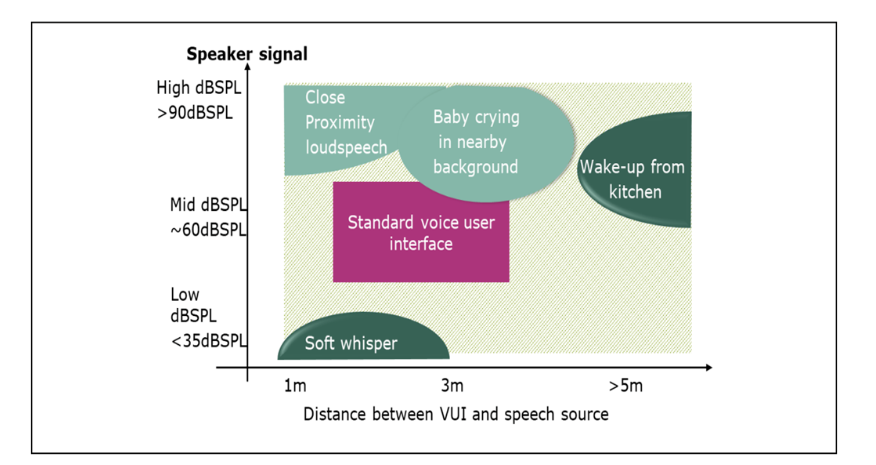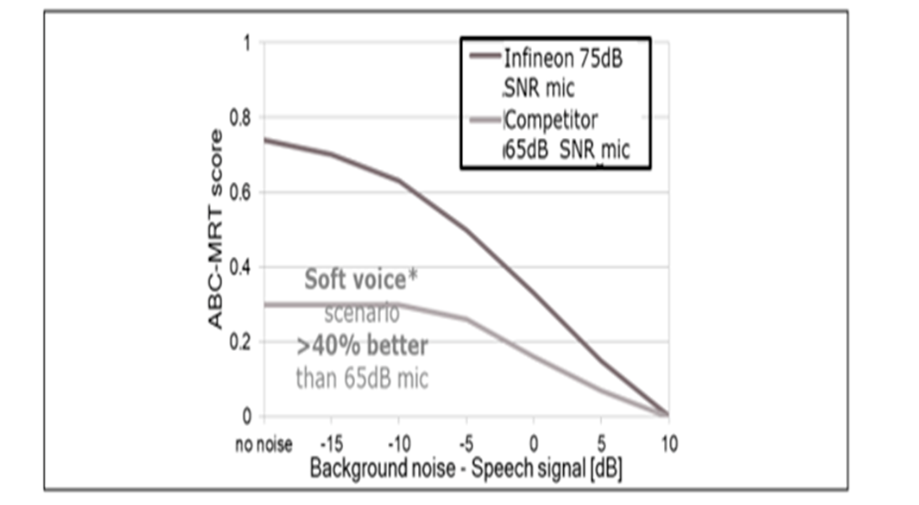
Conversational AI is a rapidly growing field of machine learning that aims to make human-computer interaction more natural and intuitive. It uses advanced algorithms and techniques to understand natural language input and enable machines to respond like humans. By integrating conversational AI frameworks into tools and systems, users can use natural language instructions to interact with machines. These intelligent systems are able to understand a user's semantics and context, remember user preferences, and engage in meaningful conversations.

As voice applications become increasingly important in everyday life, this article will focus on conversational AI that can understand and respond to spoken language rather than written text. We'll explore some of the advanced technologies that are driving the growing conversational AI market and the challenges that voice assistants face in achieving widespread adoption. A key factor in improving the user experience of voice applications is the development of a voice user interface (VUI). In order to achieve accurate speech recognition and improve overall audio quality, high signal-to-noise ratio (SNR) MEMS (micro-electro-mechanical System) microphones are emerging as a key component.
These high-performance silicon microphones, with their compact size and high sensitivity, help enable more accurate speech capture, filter background noise, and ensure clearer audio input for conversational AI systems. In this article, we will explore how the integration of high SNR MEMS microphones in speech applications can help greatly improve speech recognition accuracy and enable more natural and seamless human-computer interaction.
Equipment and Applications
Conversational AI has become an integral part of many existing devices and applications, changing the way we interact with technology in a variety of contexts. Some familiar applications that rely heavily on conversational AI include:
● Smart Speaker - A smart speaker is a standalone speaker that integrates a voice assistant that responds to user requests. Some of the most famous smart speakers on the market include the Google Home speaker with Google's voice assistant, the Amazon Echo speaker with Alexa, and the Apple HomePod speaker with Siri.
● In-car voice interaction systems - Cars with integrated voice assistants allow drivers to focus on steering and observing the road. Drivers can control music playback, navigation systems and air conditioning temperatures without the distraction of looking for buttons or navigating menus.
● Smart Home Systems - Smart home systems provide an easy way to operate home control systems using natural language commands. Common devices that integrate conversational AI include lighting systems, thermostats, and security systems.
● Intelligent Conference System - Intelligent Conference System is an efficient tool for transcribing and translating meeting text using conversational AI. These systems often integrate voice assistants to perform administrative tasks such as scheduling, identifying action items and writing meeting minutes.
Reshaping the future of conversational AI
The market for devices and applications that integrate conversational AI has seen rapid growth in recent years, and the COVID-19 outbreak has accelerated their adoption. Driven by improved efficiency and advancements in conversational AI technology, the voice assistant market is expected to grow at a compound annual growth rate (CAGR) of 33.5% between 2023 and 2030. Some of the current trends driving the growth of this technology include:
● Improvements in speech recognition algorithms - With the proliferation of conversational AI, the data set for speech recognition is growing, which means that speech recognition algorithms are getting better at recognizing words, phrases, and the way real people speak. This also means that speech recognition technology is better able to identify languages, accents and dialects.
● Advances in natural language processing - Natural language processing is the mechanism by which conversational AI understands user requests. The increasing perfection of natural language processing algorithms has improved the accuracy and personalization level of conversational AI, making conversational AI more intuitive and reliable.
● Increased use of voice-controlled devices - As voice-controlled technology is increasingly integrated into devices and applications, the growing demand for conversational AI is further boosting the field. As technology advances, virtual assistants will be able to handle increasingly complex tasks and provide better output. As conversational AI continues to improve productivity, the number of businesses using voice applications is expected to continue to increase.
The challenges that voice assistants face in achieving widespread applications
With the rapid development of speech recognition and natural language processing technologies, the market demand for advanced conversational AI systems has also grown significantly. Despite these advances, users continue to encounter annoyances that hinder the widespread use of voice assistants. Many of the challenges preventing the technology from achieving widespread adoption have to do with data privacy, such as user concerns about the security of voice data stored in the cloud and the possibility of devices recording private conversations through passive listening.
Users will also face some frustration in their interactions with voice assistants. Voice assistants are integrated into almost all new operating systems and devices, but they are known to confuse homophones, misunderstand accents, and require very accurate pronunciation. Voice assistants struggle to cope with any background noise and often struggle to understand users with speech difficulties. These speech recognition problems may all be caused by poor quality microphones integrated into the device.
Voice user interfaces (VUI) are an important part of conversational AI technologies such as voice assistants. Users interact with the voice assistant by speaking to the VUI. An effective voice assistant, as well as an effective VUI, must be able to accurately hear and understand voice commands. Failure to understand users can lead to a frustrating user experience.
How can high SNR MEMS microphones help improve the user experience
However, users can avoid misunderstandings by speaking clearly and directly to the voice assistant, avoiding the noisy environment while giving only simple commands. But these approaches can limit the potential of conversational AI and leave users frustrated with natural conversational interactions with voice assistants.
A mature solution to solve this problem is to improve the voice capture or voice acquisition of the VUI. High SNR MEMS microphones enable the capture of clear audio in imperfect environments and help improve speech recognition, far-field speech pickup and contextual understanding, as well as enabling multimodal systems that understand both audio and visual input - key to addressing many of the challenges that have prevented voice assistants from achieving widespread adoption.
1.Improved speech recognition
High SNR MEMS microphones can capture clear and accurate speech signals, which lays the foundation for improving the performance of speech recognition algorithms. MEMS microphones are able to capture speech from background noise, which means the voice assistant can better understand the commands and questions the user is asking. A microphone that can provide a better input signal can also improve the accuracy of the voice assistant's understanding. Because it can better adapt to the real voice environment in which users ask questions to the voice assistant, high SNR MEMS microphones can improve the overall user experience and efficiency of voice interaction.
2.Noise reduction and far-field speech pickup
The high signal-to-noise ratio allows MEMS microphones to capture voice commands clearly. SNR is the difference between the useful audio that the microphone should pick up and the noise that the microphone itself produces, so a high signal-to-noise ratio means that the microphone is able to capture more useful signals. A high signal-to-noise ratio combined with high sensitivity helps achieve far-field voice pickup, enabling users to interact with voice assistants at a distance or in noisy environments.
The following is a standard VUI use case with different voice signal levels and the distance between the voice source and the device

The following figure shows that a high SNR microphone has a higher performance score in whispering or soft-speaking scenarios

Active noise reduction and far-field voice pickup improve the usability of voice assistants in different noisy scenarios such as smart homes, conference rooms, customer support systems, and public places. A study conducted by Infineon showed that a high-signal-to-noise ratio MEMS microphone with a 75dB signal-to-noise ratio captured 40 percent better audio than standard microphones, such as those used in commercial voice assistants.
3. Context understanding and multi-modal interaction
VUI with high SNR MEMS microphones is also able to capture contextual information from user speech such as intonation and accent. This contextual understanding enables the voice assistant to infer user intent to provide more accurate and personalized responses.
This performance improvement also makes it possible to implement multi-mode interactions. For example, when VUI and high-SNR MEMS microphones are combined with facial recognition models, users can interact with the device through voice commands and facial expressions, further improving the voice assistant's ability to understand the user's meaning.
Conclusion
High signal-to-noise ratio MEMS microphones are critical to improving the effectiveness of conversational AI models used in VUI. They can improve the accuracy of speech recognition, realize noise reduction and far-field speech pickup, support context understanding, and realize multi-mode interaction. High signal-to-noise ratio MEMS microphones ensure optimal performance even in noisy environments, enabling clear speech signals to be captured. High signal-to-noise ratio MEMS microphones make interaction between users and virtual assistants more reliable, resulting in a better user experience.
Moreover, advances in MEMS microphone technology with high signal-to-noise ratio offer great potential for continuous improvement and increased reliability of voice assistants. The continuous development of microphone sensitivity, signal processing and noise reduction technologies will help further improve the performance of conversational AI systems. As high SNR MEMS microphones continue to improve, we can also make great strides in human-computer interaction, unlocking new potential for speech-based technologies.
Conversational AI has a bright future. Innovations in speech recognition, context awareness and training models mean that voice assistants will be able to handle more complex commands and conversations. The combination of advanced algorithms and high-quality microphones means that users will get a more comfortable and intuitive experience using voice assistants.
About US
Heisener Electronic is a famous international One Stop Purchasing Service Provider of Electronic Components. Based on the concept of Customer-orientation and Innovation, a good process control system, professional management team, advanced inventory management technology, we can provide one-stop electronic component supporting services that Heisener is the preferred partner for all the enterprises and research institutions.
